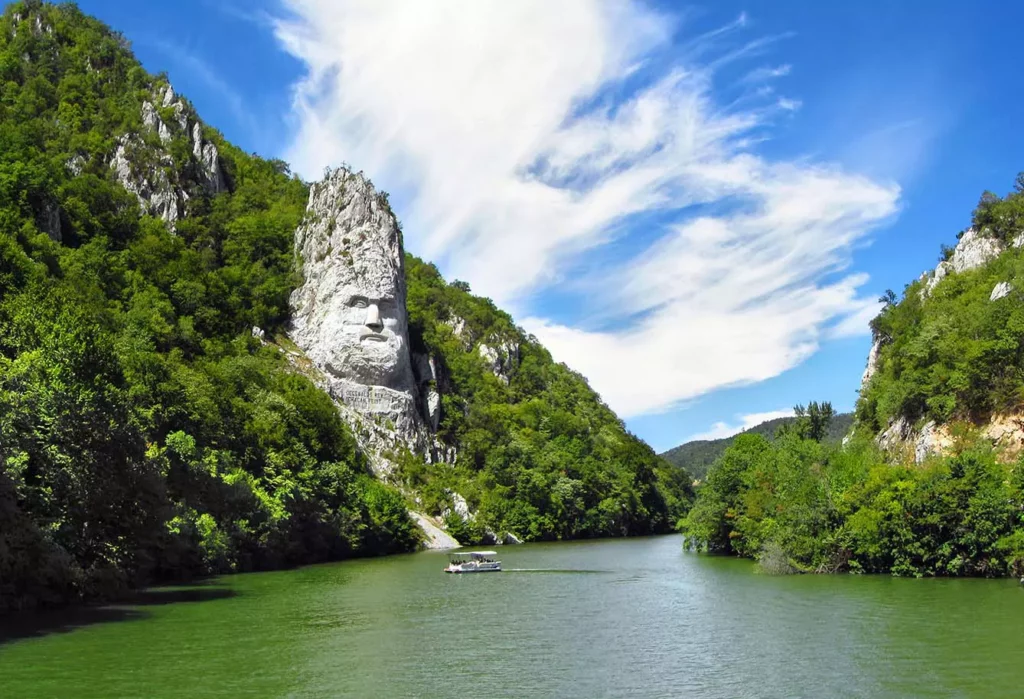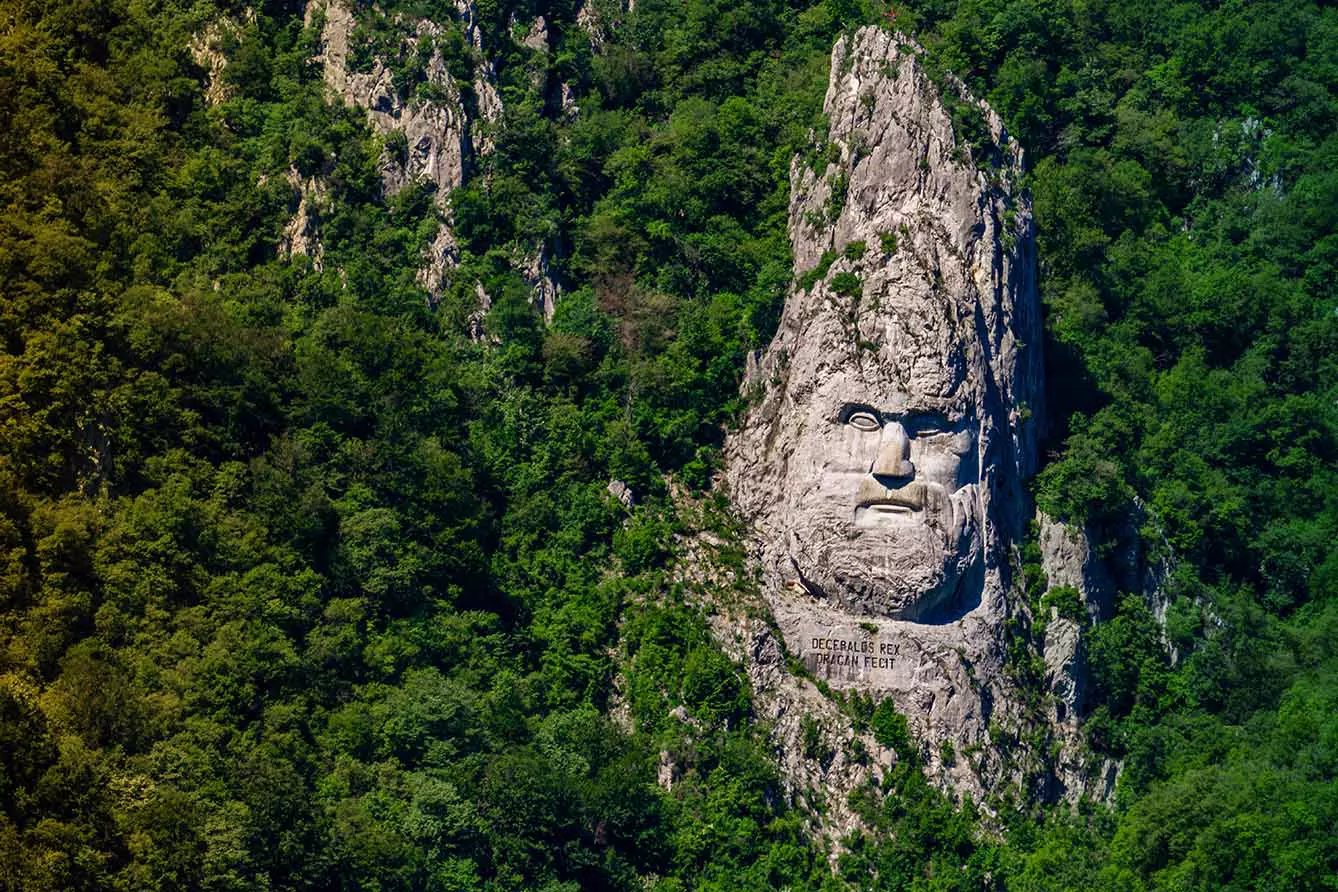At the border between Romania and Serbia, on a rocky bank of the Danube, lays Europe’s largest rock sculpture, the face of Decebalus. Measuring 55 meters in height, the colossal carving takes the breath of any visitor due to its sheer size and grandeur. Right below it, an intriguing text reads: Decebalus Rex—Dragan Fecit, Latin for “King Decebalus—Made by Drăgan.” We know who King Decebalus is, but who is Drăgan? And why is his name on Europe’s largest statue?
An ode to a national hero Decebalus
Decebalus, the last king of Dacia, is considered a national hero. Fighting with his all might against the Roman Empire and securing the region of Dacia against all threats, he was a king respected and admired during his time and well after. Europe’s tallest rock sculpture stands as living proof of this.
As for Drăgan , you might not know it, but chances are you’ve heard about this man before. If you’ve ever used a gas stove, then you have likely heard of the company ButanGas. It’s not rocket science to put two plus two together, so I’m sure you can already tell where we are going with this. Iosif Constantin Drăgan was the founder of ButanGas. He was also Romania’s wealthiest man, worth nearly USD 1.5 billion, according to Capital 2006. So now the real question: why did he want the face of King Decebalus in a rock?

Iosif Drăgan: a controversial figure
Much can said about Professor Iosif Constantin Drăgan. Some call him a great man of culture, a true patriot, historian, and renowned writer who believed in the unification of Europe and national pride. Others, however, are on the opposite side and describe Drăgan as a sympathizer of the Iron Guard, a semi-official collaborator of Ceausescu and the communist regime, and a marching figure in the Protochronist national movement in Romanian history.
This philosophy was his motivation for sculpting the face of Decebalus. He was quoted saying, “Anyone traveling towards ‘Decebalus Rex Dragan Fecit’ is also traveling towards the origins of European civilization and will discover that a United Europe represents the natural course of history.” In this spirit, Drăgan even tried to persuade the Serbs into carving the face of Hadrian on the other side of the Danube. Alas, his proposal was refused.
A monumental feat
Building Europe’s tallest rock sculpture was no easy feat. It took over a decade with the unceasing work of 12 sculptors and alpinists to create the wonder that we see today. Access to the rock was difficult, and all equipment had to be transported via boats. Not to mention, the rock is located right above Danube’s deepest pits, where the water is said to reach a depth of 120 meters.
No heavy-duty machinery was allowed, and the sculptors had to carry sacks of tools on their backs weighing 40 to 50 kilograms. Every day, for eight months a year, ten years in a row, the sculptors had to cross the Danube, navigate through a viper-infested region, and to carve, sometimes by the use of dynamite, other times by the use of pneumatic hammers, the face of Decebalus. The entire construction cost more than USD 1 million. But money was not a problem for Drăgan. Or so one may assume.
Looks can be deceiving
According to the alpinists who worked on the rock, the sculpture is not entirely finished. When observed from afar, it looks truly complete. Upon closer inspection, however, only 60% of its entirety is finished. We’re talking final touches, adjustments, and additional strokes that to this day have yet to be added. Some sources stated that the billionaire ran out of money, and therefore could not afford to sponsor the final touches. Others assumed that the sculpture was, in fact, complete.
The truth is that Drăgan was 77 years old when he began this Herculean project. He was said to have checked on the progress daily and was completely dedicated to it. However, this effort, in addition to his other considerable work, wore him out. Four years after the works on the rock were “finished,” Iosif Constantin Drăgan passed away at his residence in Spain, and no further talks on the rock were ever brought up, as Drăgan bought the mountain in the 90s. What remains to this day may not be a finished work, but it sure stands as a great work of dedication and patriotism – and Europe’s tallest rock sculpture.







